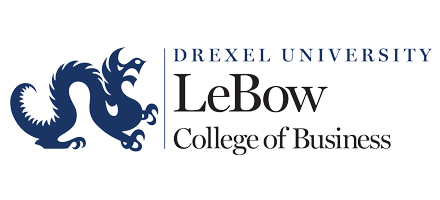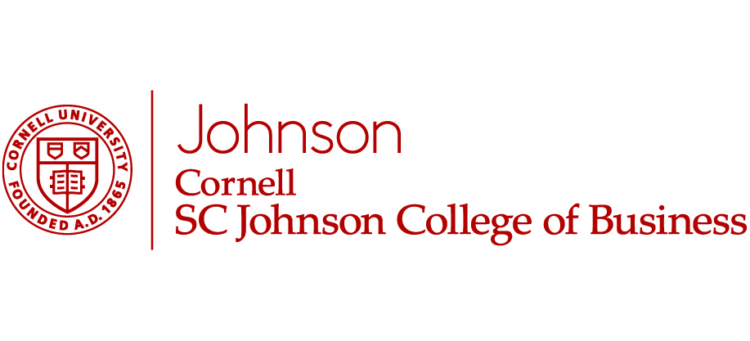
Larry Gies engages students at Illinois’ College of Business in FIN423, Entrepreneurial Finance
Most business schools are either named after someone who is long dead and gone or an elderly wealthy person who occasionally drops in for a random cocktail reception. Not Larry Gies.
On a recent Spring evening at exactly 6 p.m., he was taking the stage of the Deloitte Auditorium at the University of Illinois College of Business which bears his name after a massive $150 million gift he pledged with his wife, Beth, in 2017. It wasn’t his first time as a guest lecturer in FIN423, Entrepreneurial Finance. In fact, this is now the 30th year he has taken a break from his job as founder and CEO of Madison Industries to play professor.
For Gies’ two-hour and 20-minute lecture, Professor George Krueger had to move tonight’s session from one of the school’s smaller classrooms to the 300-seat auditorium to handle the spillover from two sections of the course, a total of 120 students, along with another group of 68 students from a class on Entrepreneurship Through Acquisition along with a few more startup-minded students.
CAN’T CHARGE TAYLOR SWIFT PRICES BUT IT’S A FULL HOUSE FOR LARRY GIES
“If this were a concert, we wouldn’t be able to charge Taylor Swift prices, but it’s a full house,” says Krueger. “He fills the class every time. Every year, year in and year out, Larry is always at the top on student evaluations.” Adds Gies Dean Jeff Brown, “If Larry was a professor here, he would probably be the highest-rated professor at the school.”
Gies does this class twice a year, each and every semester, bringing his knowledge and personal experiences to bear from building one of the largest privately held companies in the world. But he is on campus so often he jokes that he should have an office at the business school. In the past year, Gies has flown from Chicago, where Madison has its headquarters, to Champaign at least ten times for everything from speaking gigs in classes, advising students, and enthusiastically cheering on the Illinois Fighting Illini. No school could imagine a better, more supportive ambassador.
It is extremely rare for any donor to be that personally involved in a school that is one’s namesake. But Gies feels as emotionally invested as he is financially committed to the university and the business school. He graduated from the business school as an accounting major in 1988, while also meeting the woman who would later become his wife who graduated a year after him with a degree in agriculture.
AFTER HIS FIRST GUEST LECTURE, HE WAS GIVEN A C- GRADE BY LEGENDARY PROFESSOR IVAN BULL
When he was first asked to be a guest speaker on M&A in the class by then-Professor Ivan Bull in the fall of 1994, he jumped at the chance. Bull, a former chairman of the American Institute of Certified Public Accountants, was a legendary professor who taught accounting at the school for 20 years until his retirement in 1997. To this day, Gies recalls walking down the steps of a campus building with Bull who suddenly turned to him and said simply, “C-. You are going to have to work on this for next time.”
Crestfallen, Gies returned to Chicago, thinking he had bombed the class. “Two days later, he called back and said, ‘A+. The students loved it.'”
There is no doubt about his performance in class on this night. Not only is he well-prepared with charts, tables, and slides, Gies is locked in on the students every moment of the class. He consistently peppers the students with questions, pacing across the stage and up and down the aisle to challenge and engage students. As trim and fit as a marathon runner, Gies steps into it with a dark blue suit with an open collar and brown leather shoes. The 56-year-old entrepreneur seems psyched to be there. He devotes the first part of the session to a case study discussion on mergers and acquisitions. The case actually involves56- a company he had acquired and sold. The second part will delve into one of his most passionate topics: finding and pursuing one’s purpose in life.
A CASE STUDY, AN AUCTION AND SOME HARD LESSONS ON THE COST OF CAPITAL AND VALUATIONS
“Not that long ago,” Krueger tells the students, “Larry Gies was sitting right where you were. He now heads one of the largest private companies in the whole world and tonight you are going to learn how you can do it, too.”
For the class, students had to read a case study on one of Madison’s companies, crunch a bunch of numbers, and come up with a valuation to sell the operation. Each team had to submit a bid to acquire the plastics firm in advance of the class. Gies carefully studied each of the team’s proposals, selecting four groups who he will pressure to compete against each other in an open auction. In the competition, he only wants the students to say how much more they add to their existing bids so no team has the advantage of knowing exactly where they are in the process.
The students add between $5 million and $62 million to their totals. Obviously, the highest bidder wins the auction but also an important lesson when Gies’ questions reveal they were simply caught up in the moment and wanted to win, even when the deal no longer made financial sense. Gies’ lecture about the three most common ways to value a company–a multiple of EBITDA, discounted cash flows and comparables with similar companies–goes out the window. The winning team ultimately upped their bid to $291 million, valuing the company at 21 times EBITDA (earnings before interest, taxes, depreciation and amortization).
‘NO BANK IS GOING TO LEND YOU THAT MONEY!’
“You are now the proud owner of plastics,” says Gies, who points out that the range of bids across all the teams was $29 million to $291 million. “How could you have that much of a delta? No bank is going to lend you that money,” he tells the winning team. “In this market, you are not going to get eight or ten times EBITDA. And interest rates are going to eat up your cash flow.”
Gies has taught this case since the fall of 2004 so he knows that the multiple for the business has gone from 7.9 times to 15.4 last year and the average bid has been $45 million. “I bought the company for $30 million and sold it for $90 million,” he reveals. “But the bids are going up. The multiples and comparisons are going up. Why?,” he asks.
A student raises his hand. He says interest rates were going down so the cost of capital was going down as well. Valuations were therefore going up.
“Yes, but this period of easy money is over. Interest rates have changed everything. The cost of capital reset has impacted multiples. The company I paid 16 times for, I would only pay nine times for it now. Last year, you saw what happened to the markets. If you look over 20 to 30 years, those dips don’t look that bad. But you now have a huge valuation mismatch. Decisions had been made on low-interest rates and cash flows that were way too high. As the downturn starts in the spring of 2023, you will see the values come down. This period of easy money is over and that changes everything for a long, long time.”




